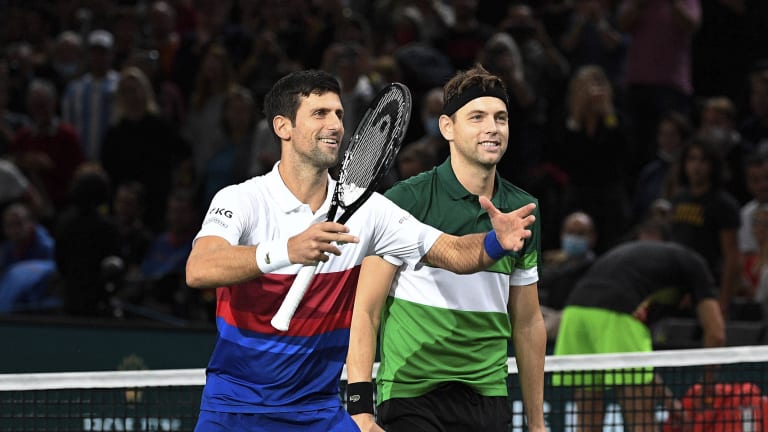ATP Paris, France
Novak Djokovic is playing doubles in Paris. Might there be room for more singles stars, or are physical and economic factors too persuasive?
By Nov 03, 2021ATP Paris, France
Jannik Sinner's latest brilliant run takes him to Paris title
By Nov 02, 2025ATP Paris, France
Paris: Felix Auger-Aliassime nears No. 8 in ATP Finals race after halting Valentin Vacherot
By Oct 31, 2025ATP Paris, France
Will Ben Shelton finally turn the tide against Jannik Sinner?
By Oct 31, 2025ATP Paris, France
Valentin Vacherot defeats Cameron Norrie in Paris to bring Masters 1000 win streak to 10
By Oct 30, 2025ATP Paris, France
"I just have to punish him": Alexander Bublik has final word in Paris with Corentin Moutet
By Oct 29, 2025ATP Paris, France
Jannik Sinner's No. 1 bid starts with second-round win over Zizou Bergs at Rolex Paris Masters
By Oct 29, 2025ATP Paris, France
Grigor Dimitrov withdraws from Paris Masters clash with Daniil Medvedev due to shoulder injury
By Oct 29, 2025ATP Paris, France
Valentin Vacherot earns another Masters 1000 win over cousin Arthur Rinderknech, in Paris
By Oct 29, 2025ATP Paris, France
Carlos Alcaraz falls to dialed-in Cameron Norrie in Paris Masters opener
By Oct 28, 2025Novak Djokovic is playing doubles in Paris. Might there be room for more singles stars, or are physical and economic factors too persuasive?
The world No. 1 is teaming up with Filip Krajinovic this week, but the sober reality of contemporary tennis is that the vast majority of singles players rarely play doubles.
Published Nov 03, 2021
Advertising
Advertising

Djokovic and Krajinovic are reuniting on the doubles court for the first time since February's ATP Cup.
© CHRISTOPHE SAIDI